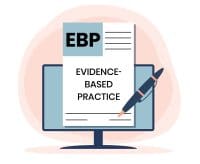As editorial director for American Nurse Journal, it’s my job to field what we call “queries”—emails from nurses asking if a topic would be of interest to the journal. You can learn more about crafting a query in an earlier article. Here I want to address a more fundamental question: Is your topic suitable for the publication you are targeting? Before reaching out to an editor, you want to be able to answer that question with a resounding “yes!” Before you can do that, though, think about your answers to three other questions.
Is this an article or opinion piece?
Some of the queries I receive are from nurses who want to persuade their colleagues to think differently about an issue or take a particular action. These nurses are clearly passionate about their topics, and I respect and appreciate that passion. However, articles seeking to persuade usually are classified as opinion pieces, and the only opinion pieces American Nurse Journal publishes are editorials from our editor-in-chief. Most journals publish editorials from the editor, and some also publish “guest” editorials or “viewpoint” opinion pieces.
In the case of American Nurse Journal, I’m sometimes able to redirect nurses to share their insights as an entry in the Community section of the journal’s website. The short (500 to 1,000 words is typical) articles in this section aren’t indexed in databases, but provide an outlet for “getting the word out,” especially because they frequently are promoted via our social media platforms.
Persuasion differs from providing evidence-based information so that nurses will be able to more effectively care for patients. For example, we recently published an article on how nurses can provide education for pediatric patients with asthma when no asthma educator is available. The article provided a lot of useful, practical information that nurses could apply in their practice, making it a good fit for American Nurse Journal. I feel sure that the authors’ goal was a better outcome for patients with asthma.
If the authors had instead proposed an article designed to convince nurses to provide asthma education, I would have rejected the topic because that would be an opinion piece. Although opinion articles certainly have information to back up the writer’s point of view, the overall purpose and direction is different.
How widely applicable is the topic?
Quality improvement (QI) projects are at the heart of an organization’s operations and frequently lead to better outcomes. However, some QI projects are simply too narrow in scope to make them suitable for publication. For example, if the project was based on a single unit, it’s unlikely to be of interest to most journal editors, especially because the data are likely to be limited.
If, however, the QI project involved an entire service line or even the entire nursing department, you’re on better footing. So…instead of asking about publishing that pilot QI project you did on one unit, you might want to wait until you have more experience with the intervention. You also should ensure that other organizations could implement what you did.
I should note, however, that at American Nurse Journal, we sometimes publish smaller QI projects to illustrate the work of nurses in organizations with Magnet® or Pathway to Excellence® designation. These types of articles are part of the three Nursing Excellence special sections we publish each year.
Another aspect of applicability is the size of your target audience. American Nurse Journal is a member benefit of the American Nurses Association, so we have a wide readership. We try to meet the needs of nurses in many different specialties, but realistically, if your topic is of interest to a small target group, we are less likely to publish it. For instance, an article on a medication used for patients with a very rare condition that most nurses are unlikely to see in their practice would likely not be appropriate for the journal.
Does the article fit with content the journal has published?
You should consider this question from two perspectives. First, think about the topic in general terms. If, for instance, you have the expertise needed to write an article about strategies for managing shift work, you’ll soon realize that the topic would fit with the Healthy Nurse section of American Nurse Journal. A journal that focuses on cardiovascular care of patients would not be an appropriate publication outlet.
The second perspective to consider is whether articles on the same topic have been published within the last 1 to 2 years. For example, if we published an article on managing shiftwork in January, we are unlikely to be interested in another article on the same topic in June, unless it approached the topic from a significantly different angle. If that’s the case, you should point out to the editor how your article is different from what has been published. Doing so will also let the editor know you read the journal.
Keep in mind that editors look for new angles on topics that they need to revisit on a regular basis. For example, at American Nurse Journal, we frequently publish articles about obtaining more education; we even have an annual education and career guide. It can be challenging to have a fresh take on these topics, which is why my interest was piqued when I received an email query for an article on Free Open-Access Medical (FOAM), a unique way for nurses to obtain more education. Because it’s an online option, it’s also relevant in the middle of a pandemic. This query turned into a published article.
On target
Answering these three questions can help you determine the best fit for your topic, which in turn, will increase the likelihood an editor will be interested in publishing an article on your idea.



















